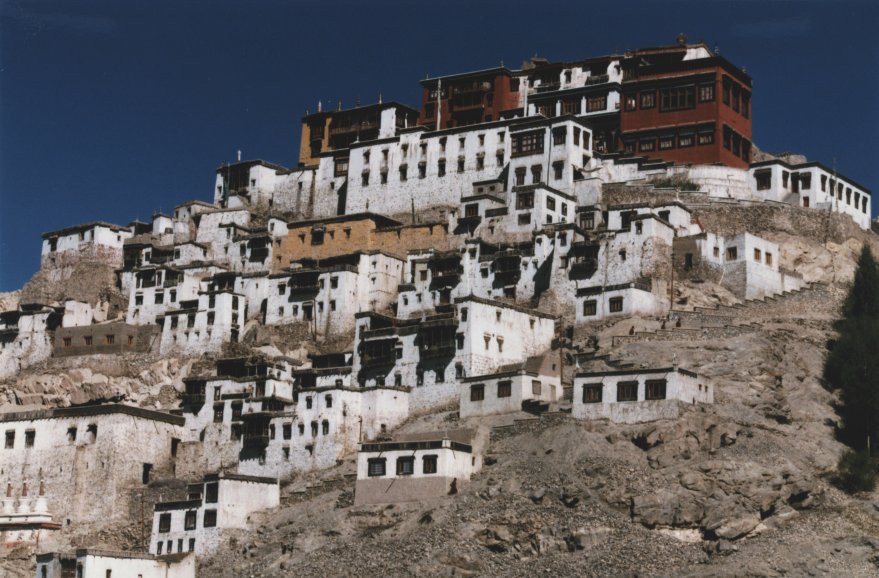This is an old revision of this page, as edited by Henry Flower (talk | contribs) at 09:43, 1 June 2004 (→Geography: fix pic). The present address (URL) is a permanent link to this revision, which may differ significantly from the current revision.
Revision as of 09:43, 1 June 2004 by Henry Flower (talk | contribs) (→Geography: fix pic)(diff) ← Previous revision | Latest revision (diff) | Newer revision → (diff) |
Ladakh is the largest district of the Indian state of Jammu and Kashmir, covering more than half the area of the state (of which it is the eastern part). Nevertheless Ladakh is one of the least populated districts in India. It is renowned for its remote mountain beauty and Tibetan Buddhist culture; it is sometimes called "Little Tibet". The capital is Leh.
History
Ladakh was once an independent Buddhist kingdom. A breakdown in relations with Tibet in the 17th century resulted in an attempted invasion by the Fifth Dalai Lama. Kashmiri help restored Ladakhi rule at a price - the building of a mosque in Leh and the conversion of the Ladakhi king to Islam. Kashmir later went on to annex Ladakh, ending its independence and in the long run making it part of British India. The kingdom's former land is now divided between India, Pakistan, and the Aksai Chin district of the People's Republic of China.
Geography
Ladakh is the highest altitude district in India (much of it being over 3,000 m), straddling the Himalayan and Karakoram mountain ranges and the upper Indus River valley.
]
Historic Ladakh consists of a number of distinct areas (mainly under Indian rule), including the fairly populous main Indus valley, the more remote Zanskar (in the south) and Nubra valleys (to the north over Khardung La in the Ladakh mountain range, the highest motorable pass in the world at 5,602 m or 18,380 ft), the almost deserted Aksai Chin (under Chinese rule) and the predominantly Shi'ite Moslem Kargil and Suru Valley areas in the west (Kargil being the second most important town in Ladakh).
The Skardu area, under Pakistani rule and entirely Moslem, is sometimes additionally loosely included in what is geographically referred to as Ladakh.
Demographics
Unlike the rest of Jammu and Kashmir which is mainly Islamic, Ladakh is a predominantly Buddhist area, with most Ladakhis following the tantric form of Mahayana Buddhism. This is evidenced by the high number of Buddhist monasteries including Shey, Tikse, Hemis, Alchi, Stongdey and Lamayuru (each called locally a 'gompa' meaning 'monastery'). Ladakhis mostly speak a dialect of Tibetan referred to as 'Ladakhi' and there are some minor differences in language, the most obvious one to outsiders being the use of 'Julay' instead of 'Tashi Delek' for 'hello'.
See also: Balti language
Economy
With the Jammu and Kashmir crisis making the Kashmir valley a no-go area for tourists, the Indian Government encouraged a shift in trekking and other tourist activities to the relatively unaffected areas of Buddhist eastern Ladakh. Tourism thus became a major source of income for what previously was a subsistence, agricultural economy.
Transportation
The main corridor for trade and commerce in the area has also shifted from the Zoji-La pass and Kargil route from Srinagar in the Kashmir Valley, to the high altitude Manali-Leh Highway from Himachal Pradesh. There is one airport, situated at Leh, from which there are daily flights to Delhi and weekly flights to Srinagar.